

Not all theme worksheets are created equal. As teachers, we know the internet is overflowing with teachers’ resources. Still, you can surf for hours before finding anything worthy of your student’s time and attention. Teachers are usually willing to help each other in any way possible. This is why websites like Pinterest offer an all-you-can-eat buffet of ideas, lesson plans, activities, and worksheets. Sometimes they are freebies, and sometimes they come with a price. However, at the end of the day, these resources have the potential to save an indeterminable amount of time.
But how do you prevent wasting the potential saved time by sifting through what’s out there? And how do you know if the paid resources will live up to their promises? Here are some tips and links to help save you time and money and ensure you only walk away with the good stuff.
Identifying a theme is a challenging literary device for students to master. The theme is implied, not directly stated, so it takes a certain amount of higher-order thinking to grasp. However, students can be taught to invoke these skills. Worksheets have little value unless they are consolidating concepts or helping with thought organization. So, what should a good theme worksheet have that will ensure your students are actually learning something?
Whether you paid for it or it’s a freebie, don’t just assume it will be flawless. Worksheets could contain spelling errors, incorrect information, or elements that don’t suit your school or classroom culture. I always complete a mock example, as it’s the best way to check.
Many students get confused and think the theme is the overall plot. However, the main idea summarizes the story in a sentence. The theme is more subtle. It’s the moral of the story, the underlying messages, and observations on how characters interact or grow throughout the story. There can be many themes in one story. For example: The Harry Potter Series
Harry is a reluctant hero who constantly struggles to keep Voldemort and his evil plans at bay.
If your worksheet has questions, make sure they require thought and a valuable, clearly motivated opinion. While level one questions have their place, your questions should incorporate all levels of Bloom’s taxonomy. They should not just ask questions like, ‘What was Harry’s Last name?’ or “What type of birds brought Harry’s letters?’
Identifying themes can be open-ended and up for discussion. As long as students can motivate their answers well, they can comment on themes others may not necessarily see.
Worksheets are great for flow charts, Venn diagrams, spider diagrams, or any other tool that assists in brainstorming and organization of thoughts.
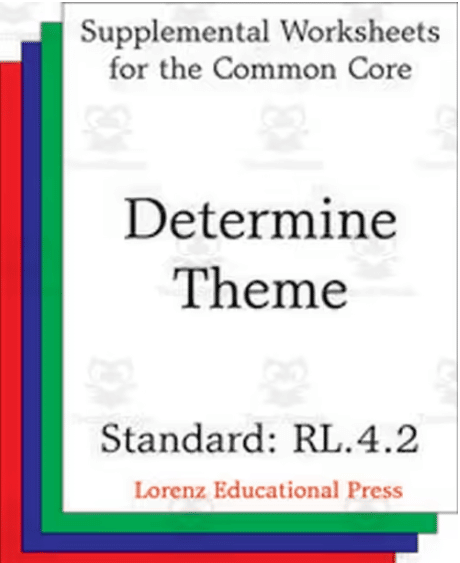
This is one of a set by Lorenzo Educational Press, available on Teach Simple. Each ePacket has reproducible worksheets with questions, problems, or activities that correspond to the packet’s Common Core standard. Download and print the worksheets for your students to complete. Then, use the answer key at the end of the document to evaluate their progress.
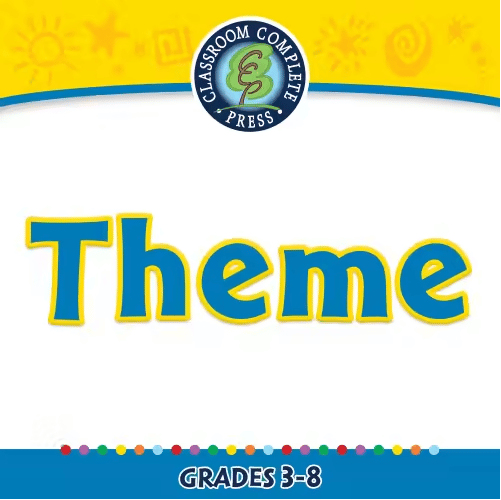
This is another multi-functional resource pack from Teach Simple. It includes worksheets and more. This chapter mini provides curriculum-based content in the form of reading passages and before and after you read questions.
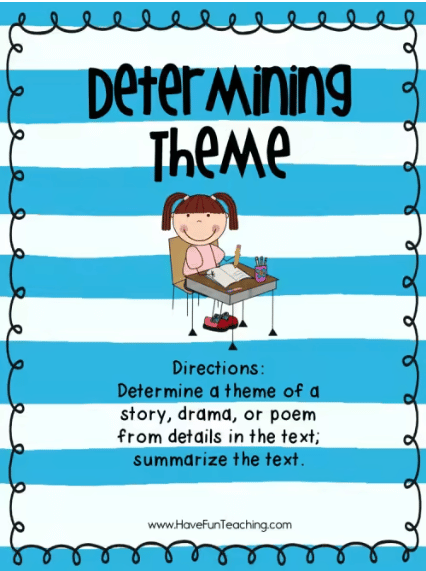
Ths cool graphic organizer worksheet with a printable story is available on Teach Simple. Its great for early elementary students.
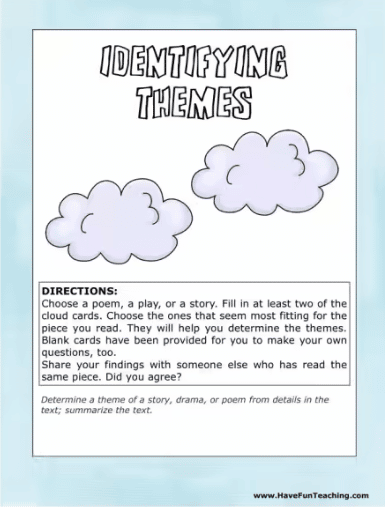
This worksheet is available on Teach Simple too. It offers open-ended, thought-provoking questions and allows students to create high-order thinking questions of their own.
This worksheet is a part of a broader lesson plan package from education.com. It is aimed at fourth graders but can be adapted for slightly younger or older students. It will help students understand how to infer them from a story’s elements and identify them by reading a passage and answering comprehension questions. This worksheet is the perfect introduction to more complex works of fiction!
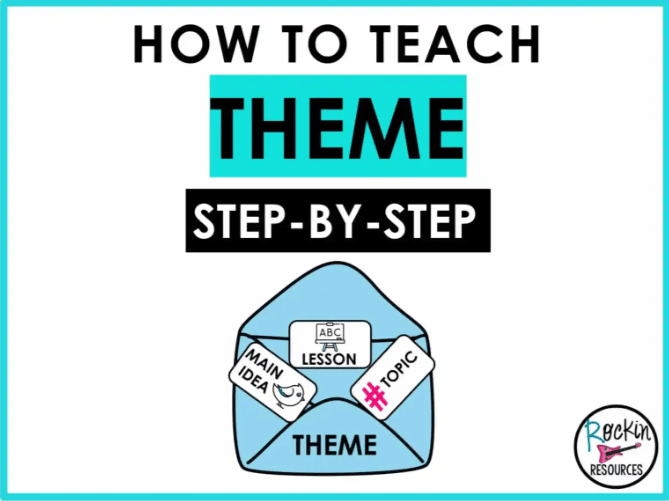
Rockin Resources has created a bundle that includes worksheets and tons of other resources. It also offers excellent tips and advice on teaching the theme and utilizing the resources.
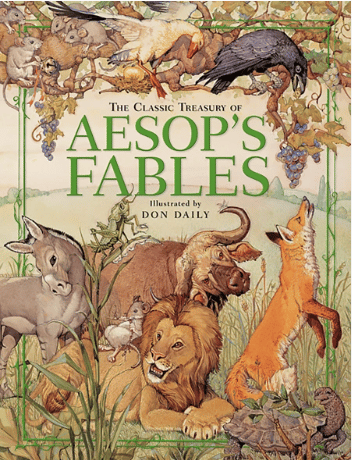
English Worksheet Land has a range of free and paid worksheets to support the teaching of theme using Aesop’s fables. The worksheets are good quality and valuable checking tools.
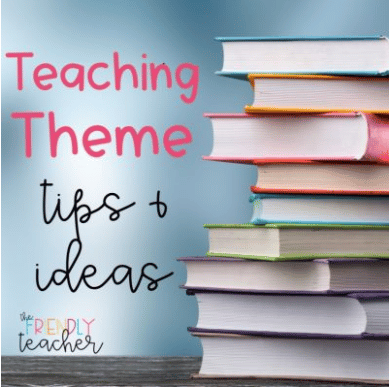
Hannah Wilde runs a website called ‘The Friendly teacher’. She has excellent ideas, tips, and resources, including worksheets to help 3rd and 4th-grade teachers teach the theme.
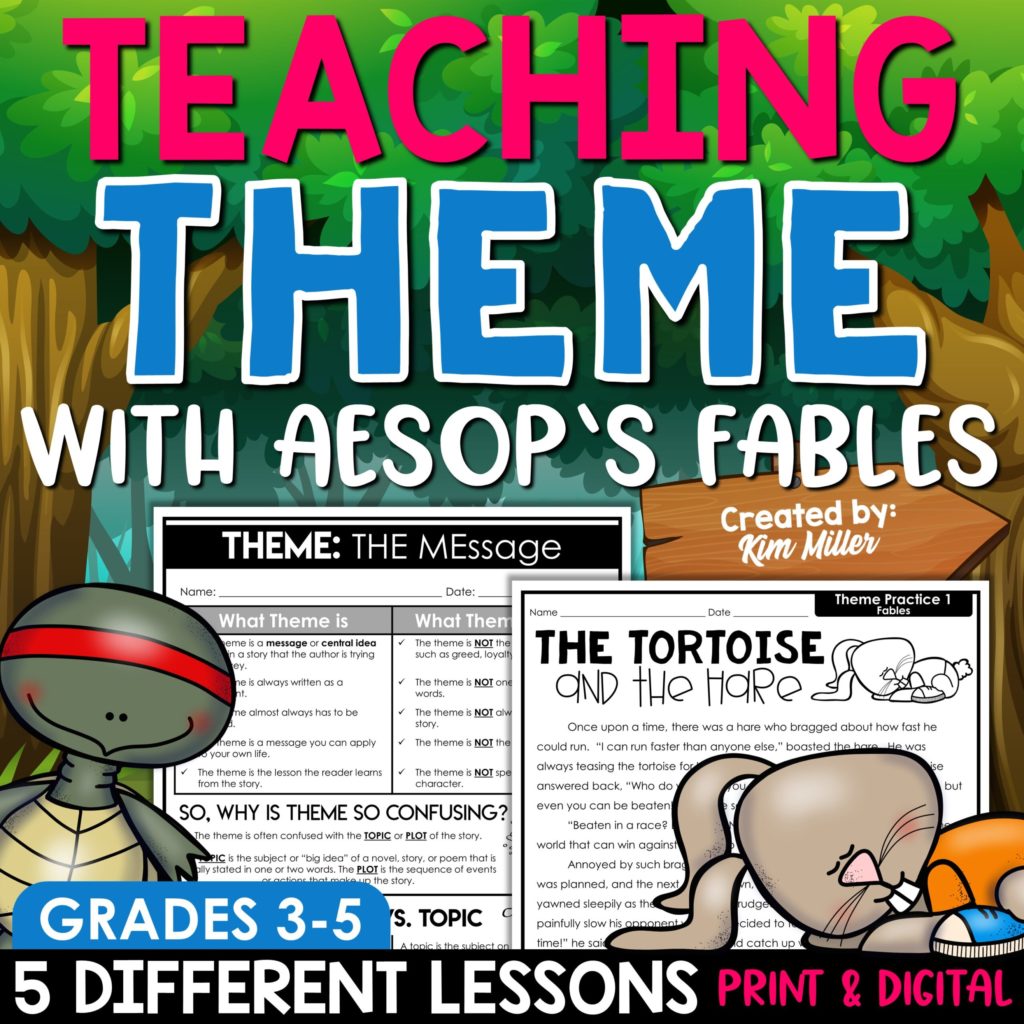
‘A Love of Teaching’ is another website created by a passionate teacher and teems with resources. The site includes a ‘mastering theme’ unit based on Aesop’s fables. Aesop’s fables are an excellent tool for teaching theme to younger students.
This resource enables students to understand how a fable’s theme is revealed through its morals, lessons, and key details.
If you are strapped for time and want to find resources quickly, here are a few to get you started.
| Age Group | Theme worksheets and resources |
| Elementary | Three Poems Activity + Assessment Unit What’s the theme? How to Teach Theme to Students Free Theme Activities How to Find the Theme of a Text |
| Middle School | Teaching Critical Reading Story Elements, Conflict, Resolution, Theme: Reading Comprehension Passages Idioms, Similes, Theme, Inference, Reflection Questions: Reading Comprehension Passages Determine Theme Teaching Theme: Tips And Resources Reading Strategies: Theme Free Theme Activities Teaching Theme in the Upper Grades and a FREEBIE! Theme Worksheets What’s the Theme? – Graphic Organizer Finding the Theme Worksheet |
| High School | Common themes Recurring Theme Theme Analysis Worksheet Theme and Character Analysis |
As a teacher, you know just how uninspiring and lackluster a lesson can be if you rely on a textbook alone. That’s why educators invest hundreds of dollars annually on extra teaching supplies, such as lesson plans, to add some fun to their classes!
There are so many resources available it can make your head spin. And in all honesty, much of what is out there isn’t very good.
Although a paid lesson plan can potentially provide the quality you need, the problem is that most of them are typically behind a paywall, meaning you only get a quick glance at what you’re buying. It’s a bit of a gamble because you never know if it will be of high quality or if it aligns with your curriculum until you invest in it. Paid resources will often offer a freebie to entice you to buy more. But they usually don’t provide enough valuable materials. Even if it’s of an excellent standard, it could have certain components or activities you know your students would not be interested in.
Many resource platforms sell each product individually, and you pay per download. This may make sense if you only need one or two things, but if you are looking for a regular supply of quality resources, a subscription-based service is far more practical and affordable.
At Teach Simple, we provide subscription-based access to all the lesson plans and teaching materials you’ll ever need. Our materials are crafted by teachers and each resource is peer-reviewed to guarantee it meets standards. In addition, it offers insightful blogs, classroom management tips and strategies, and loads of inspiration and ideas.
You will never need to look much further for a themed worksheet again. Teach Simple will have what you need, or one of our detailed blogs and articles will fill you with creative ideas and provide links to examples and resources.